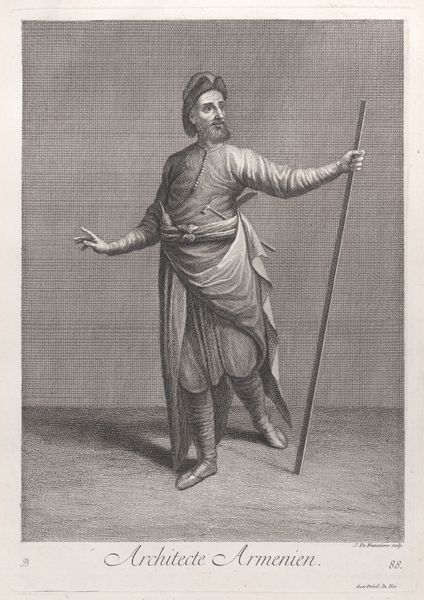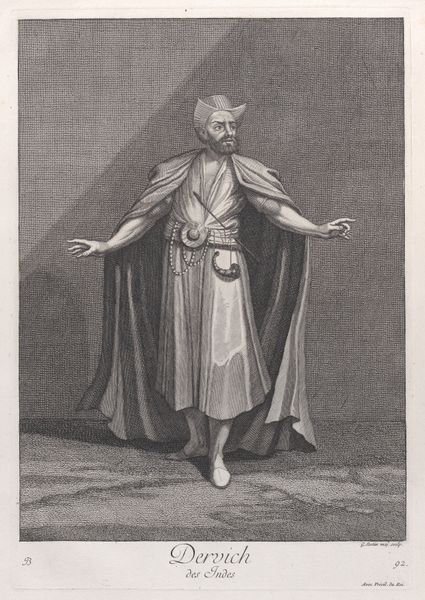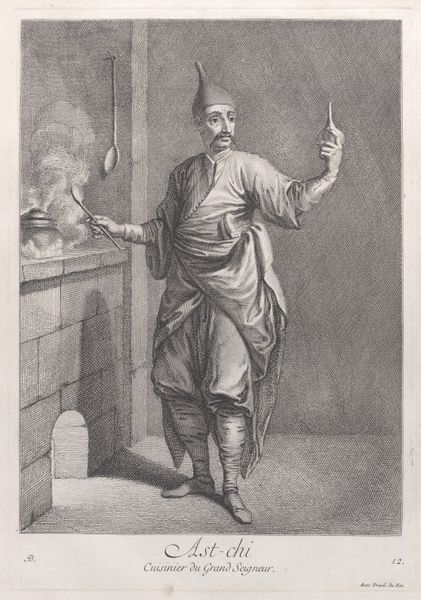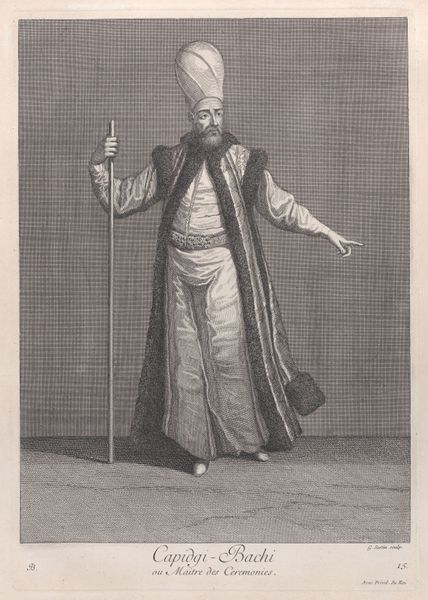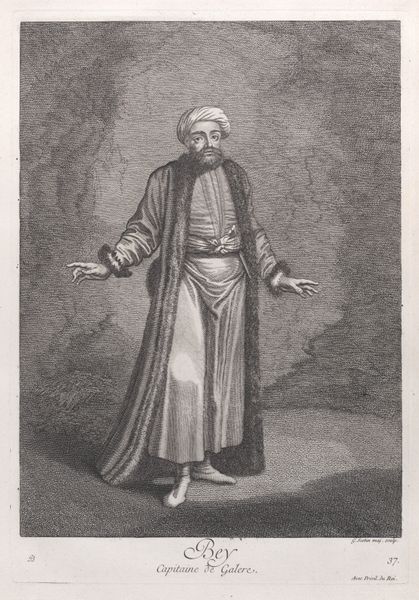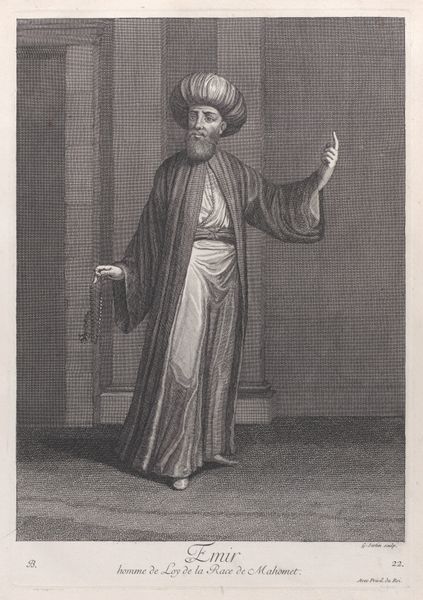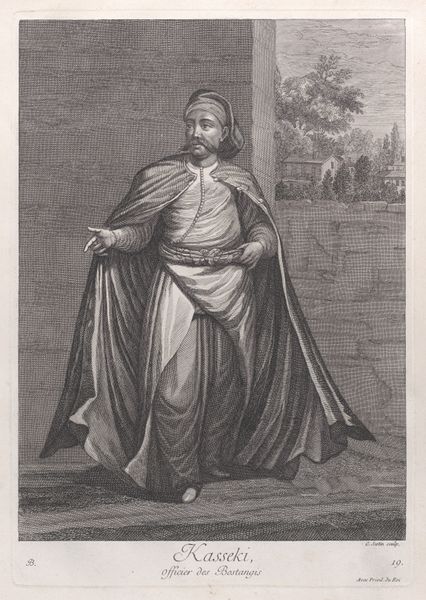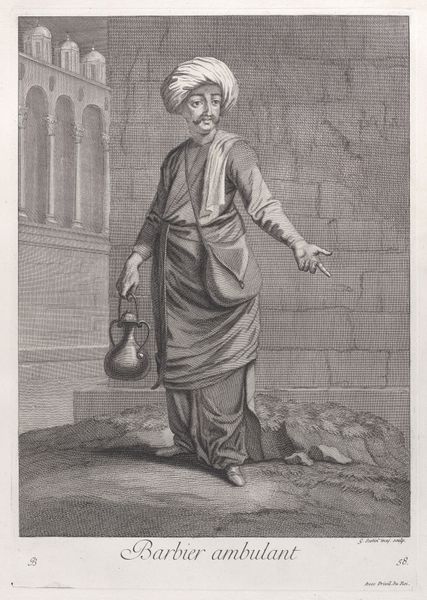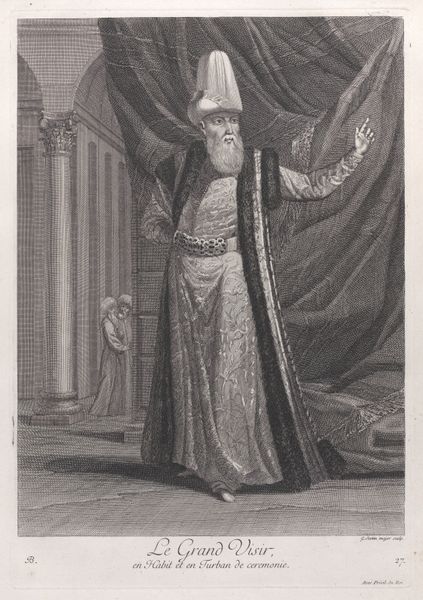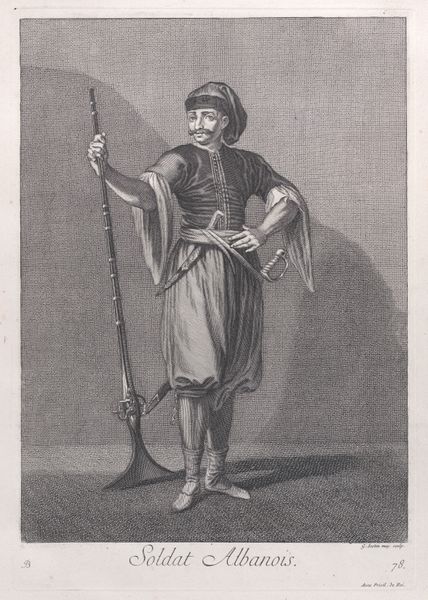
Zulufli-Baltadgi, Page destiné pour la garde des Princes enfermés, plate 10 from "Recueil de cent estampes représentent differentes nations du Levant" 1714 - 1715
0:00
0:00
drawing, print, engraving
#
portrait
#
drawing
#
facial expression drawing
#
baroque
# print
#
portrait reference
#
orientalism
#
limited contrast and shading
#
men
#
portrait drawing
#
history-painting
#
engraving
Dimensions: Sheet: 16 7/16 in. × 12 in. (41.8 × 30.5 cm) Plate: 14 1/16 × 9 3/4 in. (35.7 × 24.8 cm)
Copyright: Public Domain
Editor: Here we have Jean Baptiste Vanmour’s "Zulufli-Baltadgi," an engraving from around 1714-1715. It feels like a carefully staged portrait, but also very austere. What strikes you about this piece? Curator: Considering Vanmour's project, "Recueil de cent estampes," the material conditions of its creation are crucial. It’s a mass-produced print, part of a larger series depicting people of the Levant. The choice of engraving allows for the efficient reproduction and dissemination of these images, primarily for a European audience, furthering Orientalist notions through readily consumable imagery. Who was the target audience? Editor: Presumably wealthy Europeans interested in the "exotic" East? Curator: Precisely! Note the details: the subject’s clothing, the elaborate hat. These weren't merely observed but constructed for a specific purpose. How does the technique—the lines, shading—contribute to this construction? What kind of labor was involved in the creation and dissemination of these images? Editor: The fine lines create a sense of detail, but the limited shading almost flattens the figure, perhaps suggesting a detached observation rather than deep engagement? So it’s not just about the image itself but also the systems of production and consumption that made it possible. It's easy to forget about the artist himself. Curator: Indeed. And the economics behind commissioning such a series, the distribution networks involved…These factors shape how we interpret the artwork today. Understanding the means of production opens up crucial questions about the power dynamics inherent in representation. I think I need to rethink my perception of this artwork.
Comments
No comments
Be the first to comment and join the conversation on the ultimate creative platform.
